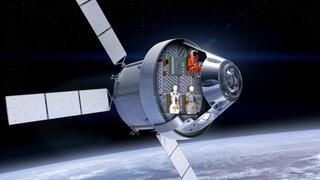Radiation protection on the way to the moon Nearly two years after the Artemis 1 mission , which tested the Orion spacecraft on an uncrewed flight around the Moon, the first scientific paper on radiation levels measured during the journey to the Moon was published last week. The Israeli-American company StemRad participated in the experiment, developing a protective vest to shield astronauts from particle radiation during strong solar storms. The experiment was conducted with the involvement of the Israel Space Agency and led by researchers from the German Space Agency (DLR) and NASA.
5 View gallery The Orion spacecraft ( Illustration: NASA/LM/DLR ) Radiation levels were monitored by numerous sensors placed in various sections of the spacecraft, as well as on and inside two life-sized mannequins, Helga and Zohar—one unprotected and the other equipped with the Israeli protective vest. Published in the journal Nature, the paper does not yet evaluate the performance of the Israeli vest but offers a comprehensive overview of the radiation levels recorded during the mission. Notably, these levels were encouragingly low, posing minimal risk to astronauts on such a mission.
"The Orion spacecraft’s design includes radiation shielding, and we can attribute the relatively low measurements to this shielding compared to what was recorded during the Apollo program," explained Dr. Christine Hellweg, head of the department of Radiation Biology at the Institute of Aerospace Medicine at t.


















